I have this as my menu bar for the site when viewed on tablet:

The menu icon on the right shows other options when clicked. The code is
<div id="menu">
<a id="metaMenu" href="#">☰</a>
</div>
But I saw on Twitter that the entity (or it may have been the corresponding Unicode characters) is not supported in some Android phones. How can I modify my HTML to have a fallback?